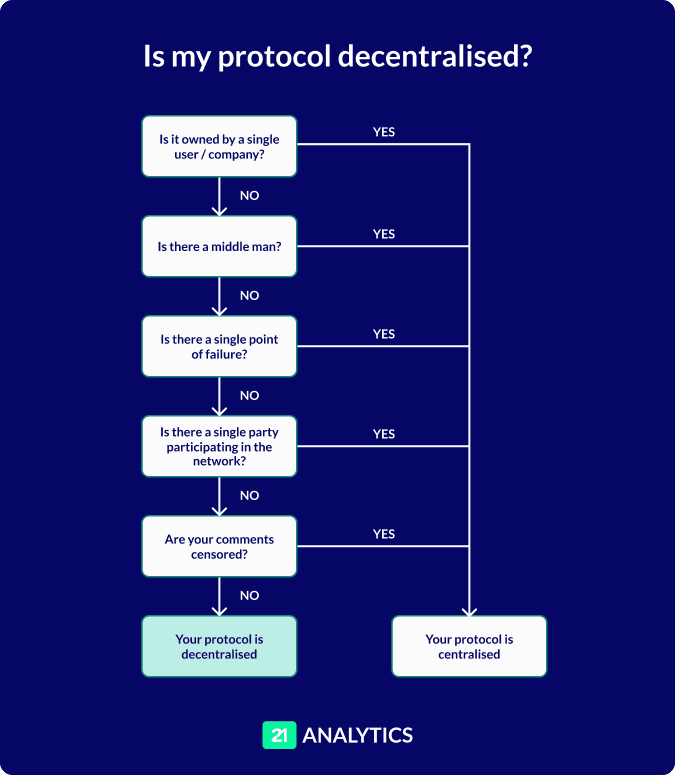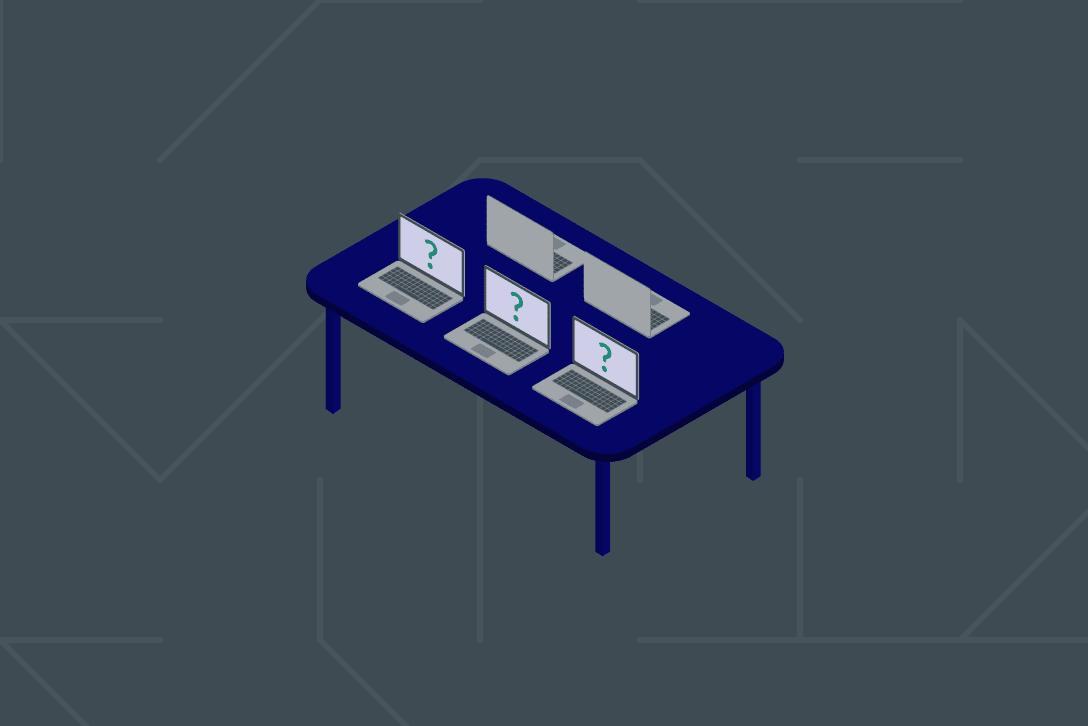
5 Ways To Tell if a Protocol Is Decentralised
Due to the Financial Action Task Force’s (FATF’s) Travel Rule, virtual asset service providers (VASPs) have had to take additional steps when transacting. This means VASPs have sought out new solutions to assist them with these steps. Many VASPs would like to opt for a decentralised option, but how can you be sure if the solution's Travel Rule protocol is decentralised or not? Let’s unpack this topic.
What Is a Protocol?
Firstly, a protocol is a set of rules for transmitting data between entities. It is nothing more than a specification. A dry document. A software engineer can take the specification and turn it into a product.
The way your browser talks to the server hosting a website is defined in a whole slew of protocols. One example of a protocol linked to cryptocurrencies is how transactions are broadcasted into the world so miners can include them in a block. This specific protocol is decentralised as it allows cryptocurrencies to be spread across computer networks with no central control point or authority.
This is one case of a protocol, but there are many types of protocols.
If we take a step back and consider the FATF’s Travel Rule, to which VASPs have to comply, protocols are also required here.
Remember, the Travel Rule requires VASPs to exchange wallet owner information to complete transactions. This exchange happens between different entities, so a protocol is needed. The Travel Rule Protocol (TRP) is a great example of one of these protocols.
What does Decentralised Mean?
In the intro, we made the comment about crypto being spread across computer networks with no authority. That is decentralisation in a nutshell. We can describe something as decentralised when there is no single authority in control. Put in a different way; you can take out any one part of the network and the whole continues to function.
Decentralised protocols are protocols that have no single owner or a single point of failure. Instead, they are generally owned by everyone and noone at the same time, everyone has access to everything.
So how do you know if a protocol is decentralised?
5 Ways To Tell if a Protocol Is Decentralised
1. Is the protocol owned by a company or single user?
If your answer is yes, then the protocol is definitely not decentralised. Decentralised protocols cannot have a single owner or authority.
2. Is there a middle man?
A great example is Uber. You use an app to ride, but cannot pay your driver directly. Here the app acts as the middle man, it takes a cut of the driver’s payment and offers you the service. If this is the case in your protocol, it is not decentralised.
3. Is there a single point of failure?
If you remove one part of the system, will the entire system stop entirely? As with the Uber example above, if the owners of Uber remove the payment options from the app, or the app itself, it will cease to operate. If your protocol has a similar layout, it is not decentralised.
4. How much trust is required?
As mentioned in point 1 the fact that there is no central body of power is a good thing; multiple participants participate in a network and the protocols are designed to prevent nefarious behaviour. A perfect example of a trustless system is Bitcoin.
5. Are you able to add your input?
Are you able to contribute to the protocol definition or are your comments censored? If you are being censored and cannot contribute then the protocol is not decentralised. One of the perks of decentralised protocols is that everyone in the community can offer suggestions and improvements. These suggestions are then voted on before any changes are made.
But how can you tell if the protocol is truly decentralised? Do you need to trust your counterparty to do the right thing, a single counterparty? Are you unable to have someone else verify the result or repeat the operation elsewhere? No? That means no decentralisation.

These 5 points are generally true. For example, it is possible to have a decentralized protocol that is proprietary and doesn’t accept community input. But you’ll find that most decentralized protocols are permissionless, open and a community effort.
Want to know more about decentralised protocols or TRP? Reach out to us today.

